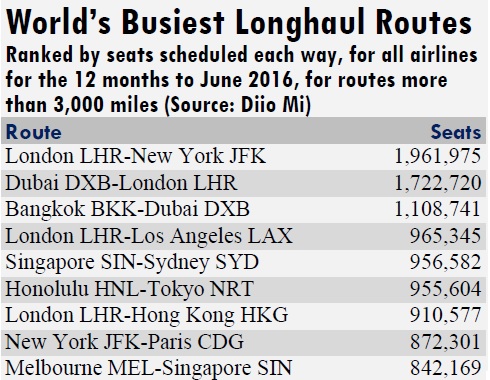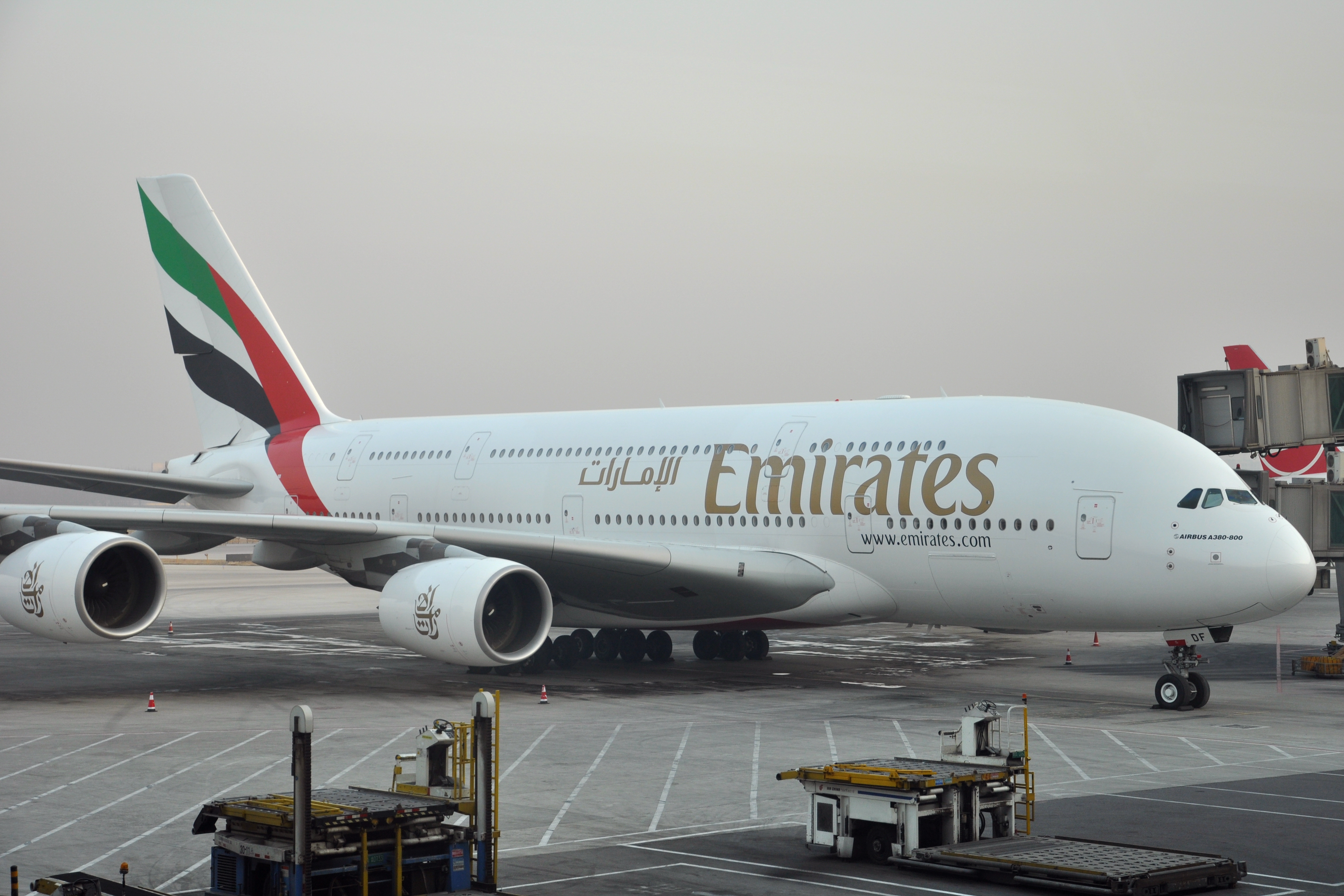The busiest airline routes are short haul routes. In the US that’s Chicago – New York and Los Angeles – San Francisco, though neither of those break into the world’s top 10.
Worldwide the most passengers each year travel between Seoul and Jeju, Tokyo and Fukuoka, and Sydney and Melbourne. By seat capacity Japanese domestic route Sapporo – Tokyo slides into the number two slot.
For long distance routes, based on capacity, these are the 10 biggest routes:

Credit: Airline Weekly
At the end of March Emirates will be adding a sixth daily Airbus A380 to the Dubai – London Heathrow route. Virgin Atlantic, British Airways (triple daily), Royal Brunei, and Qantas (with 2 A380s) also serve the route.
Four of Emirates’ six daily Dubai – Bangkok flights are operated by Airbus A380s, including with their new high-density configuration of 615 seats.

By Kentaro Iemoto from Tokyo, Japan, CC BY-SA 2.0 via Wikimedia Commons
As amazing a route as New York JFK – London Heathrow is, Los Angeles – London is equally interesting. It’s served by British Airways, Air New Zealand, American Airlines, Virgin Atlantic and United. Of course New York JFK – London used to be more interesting: it no longer is served by either Kuwait Airways or by Air India. And the stats placing it on top of world long haul routes do not include Newark – London flights on United, British Airways, and Virgin Atlantic.
Many observers were surprised by ANA’s plans to operate an A380 on Tokyo – Honolulu after acquiring future deliveries as part of their deal for bankrupt Skymark (which gets them Tokyo Haneda slots, and needed credit Airbus’ buy-in for the deal). But it’s less striking when you see that this is one of the busiest airline routes in the world.
And in fact the only other route besides Honolulu – Tokyo that doesn’t have an Airbus A380 on the schedule is the busiest route, New York JFK – London Heathrow — a route driven by massive frequencies.


I am only moderately surprised by HNL-NRT. When I was in Honolulu 2 years ago I remember doing some plane watching and it seemed every 747 at HNL was on the HNL-NRT route.
Is there data on city pairs rather than airport pairs? If we include LHR-EWR, LGW-JFK, LCY-JFK, DXB-LGW, LGW-LAX, HNL-HND, etc. that changes things.
MEL-SIN doesn’t have a regularly scheduled A380-800 either @Gary, Singapore seasonally up-gauges SQ227/SQ228 around the school holiday periods only
No LAX-TYO? That is odd.
For today there are 11x flights to Tokyo versus 8x for London.
Are you saying JFK-LHR doesn’t have a single A380?
@Bill
BA is the only airline that serves that route which even has A380’s. As Gary mentioned, frequency is more important than size for JFK-LHR, not to mention that Terminal 7 at JFK, which BA uses, isn’t currently capable of handling A380’s.
It doesn’t surprise me that SYD > MEL is one of the busiest domestic routes – you only have to try driving between those cities to know why more people fly. It’s a one hour flight, versus 9 hours of driving on roads which do not compare to the interstate system here in the US.
@chasgoose BA would put A380s on JFK-LHR if they could. Gate upgrades are planned.
It would be interesting to see the amount for NYC-LON. Missing out on the EWR and LGW flights probably makes a big difference.
@golfingboy Tokyo to LAX is indeed a big market, but it’s split between Narita and Haneda. This analysis is for airport pairs, not city pairs.
I’d be interested to see this extended to the top 20 or 30. Seeing the actual load factor per route for 2015 would be interesting (not just the seats available)… 🙂
So…don’t expect to find any biz class award seats on these routes. Is that what you are saying?
Hang on…when did HNL become A380 capable?